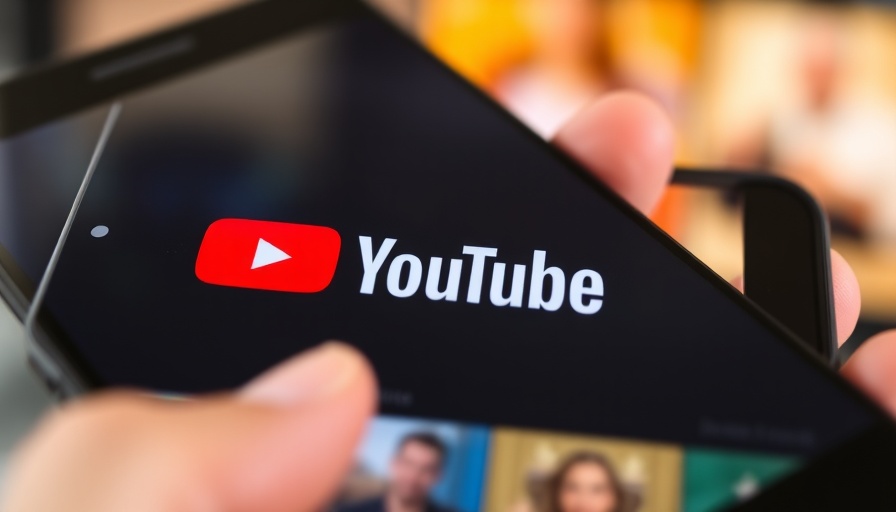
Adapting to YouTube's New Mid-Roll Ad Strategy
YouTube is gearing up for a significant transformation in its advertising strategy as it introduces automated mid-roll ad placements starting May 12, 2023. This new system aims to streamline the way ads are integrated into videos, shifting from potentially disruptive placements to more organic transitions during natural content breaks. With this change, YouTube hopes to enhance the viewing experience while maximizing revenue for creators.
Understanding the Automated System
The upcoming adjustments will prioritize automated placements, allowing YouTube's algorithm to insert ads where they feel it’s most effective. However, the platform is offering a hybrid approach. Creators can choose to enable both automatic placements and manage their own manual placements. Early tests indicate that channels utilizing this dual approach have seen an impressive 5% increase in ad revenue. This suggests that combining manual oversight with automated systems might yield better earnings for content creators—an essential consideration for those looking to optimize their channels.
Rene Ritchie's Strategic Plan for Creators
YouTube's Creator Liaison, Rene Ritchie, has shared his personal strategy for adapting to these mid-roll changes. He recommends that creators turn on automatic mid-rolls to take advantage of YouTube's ongoing enhancements to the system. For new videos, Ritchie suggests selectively manually inserting additional ad slots where they will complement the viewer experience. He emphasizes that for older content, the focus should be on high-performing videos—those with greater watch time—sorting and adjusting ad placements accordingly for optimal performance.
Maintaining Control: A Key Imprint
Even as advertising evolves, Ritchie has made it clear that manual controls for ad placements won't be eliminated. This maintains a crucial layer of freedom for creators, allowing them to decide where ads fit best in their content. He reassures creators that designated slots indicate potential ad placements but do not guarantee the ads will indeed appear there. Moreover, Ritchie likens this new ad strategy to the enhancements made in YouTube’s retention analytics, implying that data-driven decisions can lead to improved engagement.
A Partnership Between YouTube and Creators
As YouTube prepares for the May launch, Ritchie highlights the collaborative spirit between YouTube and its community. Both parties hold a vested interest in maximizing ad effectiveness since the platform and creators share revenue. If ad placements become less disruptive and more meaningful, both sides benefit, fostering a healthier ecosystem for creative expression and viewer satisfaction.
Recommendations for YouTube Creators Moving Forward
In light of the impending changes, here are some actionable insights for creators:
- Enable Automatic Mid-Rolls: Take advantage of the automated system while testing manual placements to find what suits your content best.
- Review Your Back Catalog: Prioritize adjustments for your most-watched videos to enhance engagement and revenue.
- Utilize Feedback Tools: Leverage YouTube’s new analytics tools to assess the impact of ad placements and adjust accordingly.
- Stay Engaged with YouTube: Provide ongoing feedback about your experiences, helping shape a better system for everyone.
By following these strategies, creators can not only adapt to the new changes but potentially thrive in the evolving landscape of online advertising.
Take a proactive approach today to ensure your channel's success within this new framework of mid-roll ads. The combination of automatic and manual placements could unlock new revenue streams and foster greater viewer satisfaction.
 Add Row
Add Row  Add
Add 




Write A Comment